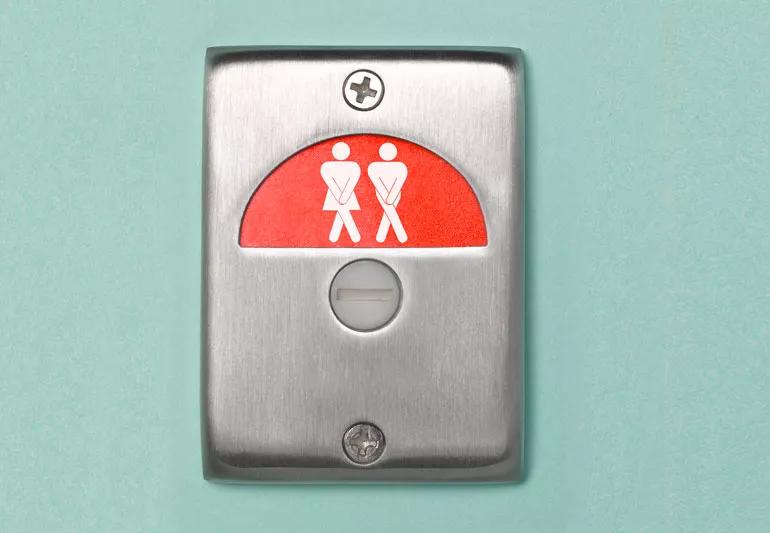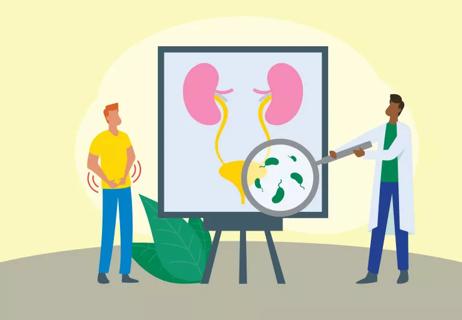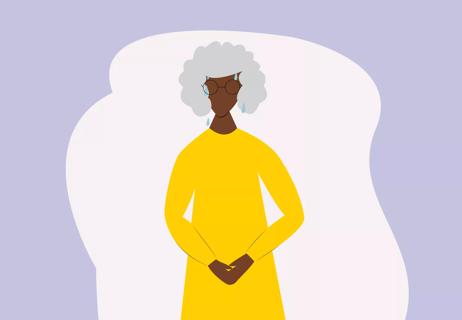The ins and outs of urinary tract infections

When you gotta go, you gotta go. But if you need to go all the time — and it kind of burns when you do — it may be a urinary tract infection (UTI).
Advertisement
Cleveland Clinic is a non-profit academic medical center. Advertising on our site helps support our mission. We do not endorse non-Cleveland Clinic products or services. Policy
But are women or men more likely to develop UTIs? Whose are easier to manage?
According to urologist Petar Bajic, MD, here are the different ways men and women get UTIs and what you can do to prevent and treat them.
Your urinary tract is your body’s drainage system for removing urine. A urinary tract infection (UTI) is an infection in your kidneys, bladder, ureters (the tubes from your kidney to your bladder) or urethra (the tube from your bladder to the outside of your body).
According to Dr. Bajic, men and women differ in both how they get a UTI and how likely they are to get one.
“Women, for example, are far more likely to develop urinary tract infections develop because there’s a shorter distance between the bladder and the outside world. In fact, some women get several infections each year,” he says. “UTIs in men on other other hand are less common, but the infection is typically much more complicated and usually related to prostate enlargement, kidney stones or other conditions.”
Most UTIs are caused by E. coli and other bacteria from the bowel and bladder that make their way into the urinary tract.
Symptoms of this infection include:
Advertisement
In men the urethral opening is at the end of the penis — a longer distance from the bladder than in women. Secretions from the prostate gland can also kill bacteria, so the frequency of a urinary tract infection is not as high.
But in men, kidney stones and enlarged prostates are common. Both of these can cause a urinary tract infection.
“When men have an enlarged prostate, residual urine can stay in the bladder and collect bacteria,” Dr. Bajic says. “The enlarged prostate presses on the urethra and blocks urine flow so the bladder doesn’t completely empty. This increases the chances of bacterial growth that can lead to a UTI.”
Dr. Bajic says kidney stones can act as a sponge for bacteria. “Even if the urinary tract infection clears up, the stones can act as a reservoir for bacteria to come back and create another infection,” he adds. “Sometimes the stones need to be removed to prevent infections from returning.”
Acute bacterial prostatitis — a prostate infection — is another less common cause. This can be life threatening if not treated right away.
Men at higher risk include those who:
There are things men can do to reduce the chance of getting a UTI. These include:
Women have a more than 50% chance of getting a UTI at some point. This is much more likely than men.
“In women, the urethra is shorter than men’s and is closer to the anus, where stool comes out. It’s also close to the vagina, which can collect bacteria during sex,” Dr. Bajic says. “Because of this positioning bacteria from the anus or vagina have easy access to a woman’s urinary tract making it easier for an infection to occur.”
He also says women who have undergone menopause may have hormone-related changes to their vagina which can predispose them to infections. But this is treatable with prescription creams.
Women at higher risk include those who:
Advertisement
Follow the same tips as men, plus do the following:
Complexity, frequency, risk factors and prevention tips may differ by sex, but urinary tract infections are equally uncomfortable for everyone. The better news is that for both men and women most UTIs aren’t serious and don’t cause other problems if you seek medical care right away.
If you think you have a UTI, Dr. Bajic recommends seeing your doctor for an exam and urine test. If you do have an infection, antibiotics can take care of it.
“Drink lots of fluids to urinate frequently to heal faster. You’ll also need to take care of any underlying issues that led to the infection,” he says.
For those who are wondering, “does drinking cranberry juice really help UTIs go away?” — few studies show any proof.
“Cranberry juice may stop bacteria from clinging to your bladder wall,” Dr. Bajic says. “But because it’s acidic it will aggravate your urge to urinate. You can drink it if you want but cranberry juice doesn’t work on UTIs as well as antibiotics and proper UTI prevention.”
Advertisement
Advertisement
Learn more about our editorial process.
Advertisement

Cranberry juice and cranberry pills may prevent future UTIs when taken consistently

Yes, but male UTIs are often the result of another issue like diabetes, prostate problems or kidney stones

Only antibiotics will cure a UTI, but home remedies could help prevent future infections

Staying hydrated and peeing after sex can help prevent this common post-sex condition

A bladder infection is definitely a UTI ... but not all UTIs are bladder infections

Signs to look out for include pain and changes in frequency or urgency

Recurrent urinary tract infections are most common in women, seniors

Changes in kidney function and new pressure on your bladder may have you running to the restroom a lot more often

Babies can get congested easily, but you can calm their cough by keeping them hydrated, using nasal drops and running a humidifier

Weight loss may cause loose, sagging skin and muscle loss to your rear

Several conditions, like vitiligo and fungal infection, can cause a loss of pigmentation, leading to white spots or patches on your skin